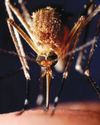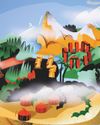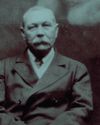Where Are All the Clones?
BBC Knowledge (Asia Edition)
|September 2016
It’s 20 years since scientists in Edinburgh cloned Dolly the sheep. Commentators at the time promised us a world overrun by cloned animals and humans. So where are they?

Embryologist Bill Ritchie knew that Dolly the sheep would be big news. But looking back to the days after the press got wind of the cloned sheep, he is still amazed by the sensation she caused. “By the Monday morning, the place was just full of trucks with dishes sending the news around the world,” says Ritchie, then at the Roslin Institute in Edinburgh and one of the researchers behind the creation of Dolly. “All hell had broken loose.”
One reporter imagined that Dolly might herald “a scientific explosion comparable to the atom bomb or the Moon rocket or DNA itself”. There were accusations that the scientists were ‘playing God’. Some envisaged herds of cloned sheep, consisting of thousands of identical sisters. One commentator even raised the alarming prospect that “any decent college or graduate school student could potentially clone a human being”. Others were more positive, seeing cloning as a lifeline for endangered species.

Given the excitement and such wild predictions of a future overrun by clones, it’s reasonable to ask what happened. Where are all the clones now? What worked and what didn’t? Who’s still cloning and why? Twenty years after Dolly, what is her legacy?
“Everyone thought it was going to be so easy,” says Ritchie. But it isn’t. In the case of Dolly, Ritchie succeeded in creating 277 cloned sheep cells. Of these, only 29 began to divide normally and were implanted into surrogate ewes. There was just one pregnancy that reached term. “It’s not a particularly efficient technique,” he explains. “I sometimes wonder how it works at all.”
Bu hikaye BBC Knowledge (Asia Edition) dergisinin September 2016 baskısından alınmıştır.
Binlerce özenle seçilmiş premium hikayeye ve 9.000'den fazla dergi ve gazeteye erişmek için Magzter GOLD'a abone olun.
Zaten abone misiniz? Oturum aç
BBC Knowledge (Asia Edition)'den DAHA FAZLA HİKAYE

BBC Earth
World's First Malaria Vaccine
The World Health Organization’s director-general hails ‘historic moment’ as mass immunisation of African children begins
2 mins
Volume 14 - Issue 2

BBC Earth
Is River Pollution Putting The Species In Jeopardy Again?
Ten years ago, it was jubilantly announced that o ers had returned to every county in England. But is river pollution putting the species in jeopardy again?
11 mins
Volume 14 - Issue 2

BBC Earth
The Big Burnout
Long hours, low pay and a lack of appreciation — among other things — can make for a stressful workplace and lead to burnout. It’s something we should all be concerned about, because over half of the workforce reports feeling it
10 mins
Volume 14 - Issue 2

BBC Earth
Putting Nature To Rights
More countries are enshrining the right to a clean environment into law. So if a company or government is impinging upon that right, you could take them to court
10 mins
Volume 14 - Issue 2

BBC Earth
Mega Spaceship: Is It Possible For China To Build A Kilometre-Long Spacecraft?
Buoyed on by its successful Moon missions, China has launched a five-year study to investigate the possibility of building the biggest-ever spacecraft
4 mins
Volume 14 - Issue 2

BBC Earth
Are We Getting Happier?
Enjoying more good days than bad? Feel like that bounce in your step’s getting bigger? HELEN RUSSELL looks into whether we’re all feeling more cheery…
3 mins
Volume 14 - Issue 2

BBC Earth
“Unless the Japanese got the US off their backs in the Pacific, they believed they would face complete destruction”
Eighty years ago Japan’s surprise raid on Pearl Harbor forced the US offthe fence and into the Second World War. Ellie Cawthorne is making a new HistoryExtra podcast series about the attack, and she spoke to Christopher Harding about the long roots of Japan’s disastrous decision
13 mins
Volume 14 - Issue 2

BBC Earth
Your Mysterious Brain
Science has mapped the surface of Mars and translated the code for life. By comparison, we know next to nothing about what’s between our ears. Over the next few pages, we ask leading scientists to answer some of the most important questions about our brains…
28 mins
Volume 14 - Issue 2

BBC Earth
Why Do We Fall In Love?
Is it companionship, procreation or something more? DR ANNA MACHIN reveals what makes us so willing to become targets for Cupid’s arrow
2 mins
Volume 14 - Issue 2

BBC Earth
Detecting the dead
Following personal tragedy, the creator of that most rational of literary figures, Sherlock Holmes, developed an obsession with spiritualism. Fiona Snailham and Anna Maria Barry explore the supernatural interests of Sir Arthur Conan Doyle
7 mins
Volume 14 - Issue 2
Translate
Change font size

